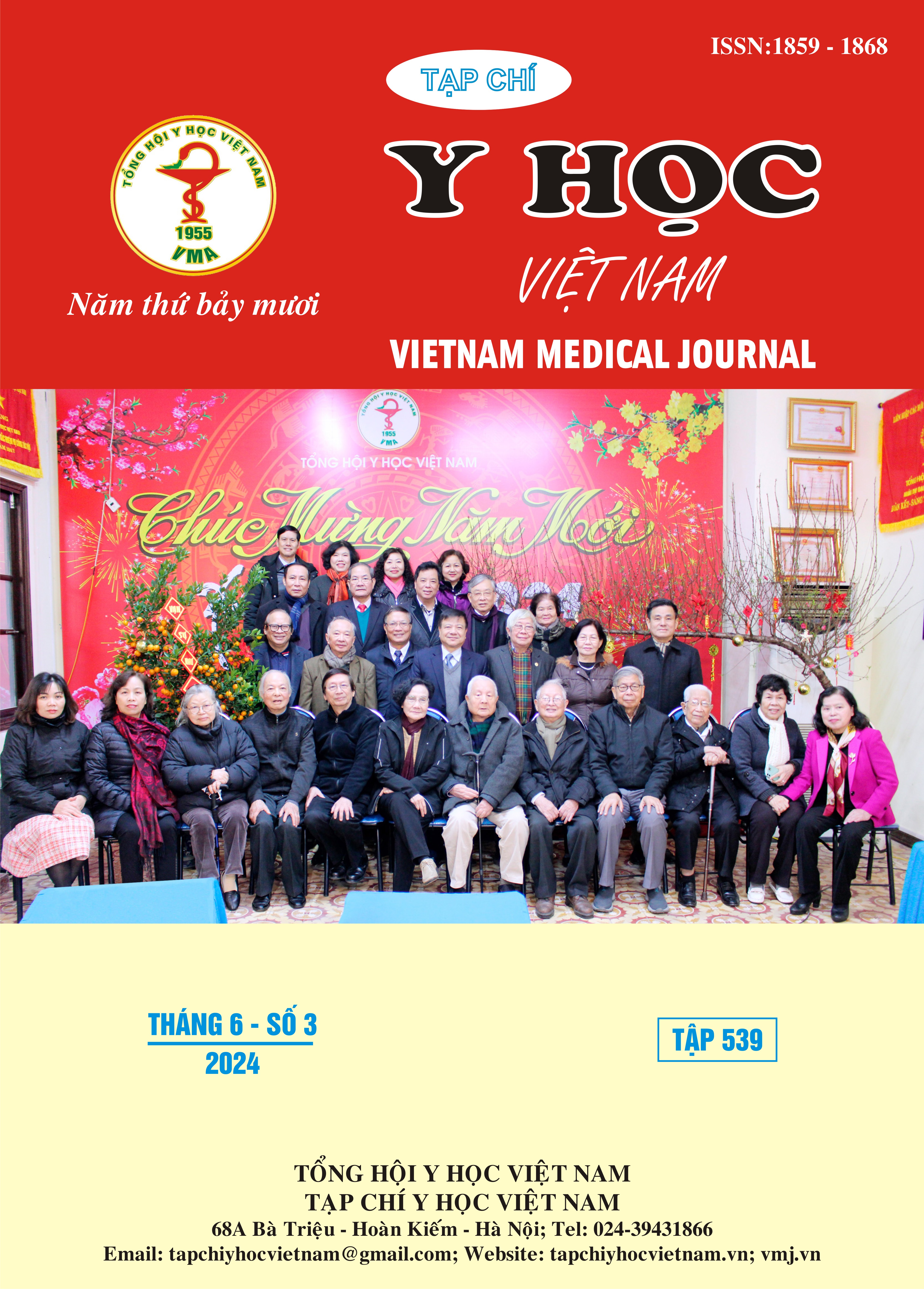SURGICAL OUTCOMES OF PEYRONIE’S DISEASE PATIENTS AT VIET DUC UNIVERSITY HOSPITAL
Main Article Content
Abstract
Background: Peyronie's disease (PD) is a disease caused by the formation of fibrous plaques in the penis. The disease can cause curvature of the penis, causing pain and hindering the patient's sexual activities. For PD patients in the chronic stage with or without erectile dysfunction, surgery is the number one treatment option to straighten the penis, protect or restore erectile function, and maintain girth and length of penis. In Vietnam, the rate of patients coming for examination and treatment for PD is still low, there are no statistics or research on this disease as well as the results of treatment. Purpose: Evaluating the results of surgical treatment of Peyronie’s disease patients at Viet Duc University Hospital. Methods: The study describes and evaluates the results after surgical for at least 6 months of 33 PD patients treated surgically at the Andrology Center - Viet Duc University Hospital, from January 2017 to June 2022. Results: After surgery, there were improvements in erectile function and penile curvature, with the average IIEF-5 score: 18.6 ± 5.6 points, the average penile curvature: 6.8° ± 9.9°. Penile length was shorter than before surgery 1.9 ± 1.0 cm. Some late complications after surgery appeared such as decreased penile sensation, lumps under the skin, and delayed ejaculation, but their rate were low. The rate of patients with satisfied and very satisfied reached 87.9%. Conclusion: Patient satisfaction after surgery was acceptable. However, it is necessary to carefully explain to the patients before surgery about some of the risks of surgery such as shortened penis and erectile dysfuntion.
Article Details
Keywords
Peyronie’s disease, surgical outcomes
References
2. Rosen RC, Cappelleri JC, Smith MD, Lipsky J, Peña BM. Development and evaluation of an abridged, 5-item version of the International Index of Erectile Function (IIEF-5) as a diagnostic tool for erectile dysfunction. Int J Impot Res. 1999;11(6):319-326. doi:10.1038/sj.ijir.3900472
3. Rolle L, Tamagnone A, Timpano M, et al. The Nesbit operation for penile curvature: an easy and effective technical modification. J Urol. 2005; 173(1):171-173; discussion 173-174. doi:10.1097/ 01.ju.0000147160.53124.1a
4. Hsu GL, Chen HS, Hsieh CH, et al. Long-term results of autologous venous grafts for penile morphological reconstruction. J Androl. 2007; 28(1): 186-193. doi:10.2164/jandrol.106.000760
5. Chung E, Clendinning E, Lessard L, Brock G. Five-year follow-up of Peyronie’s graft surgery: outcomes and patient satisfaction. J Sex Med. 2011; 8(2): 594-600. doi:10.1111/j.1743-6109. 2010.02102.x
6. Kalsi J, Minhas S, Christopher N, Ralph D. The results of plaque incision and venous grafting (Lue procedure) to correct the penile deformity of Peyronie’s disease. BJU Int. 2005;95(7):1029-1033. doi:10.1111/j.1464-410X.2005.05459.x
7. Lopes I, Tomada N, Vendeira P. Penile corporoplasty with Yachia’s technique for Peyronie’s disease: Single center experience with 117 patients. Urol Ann. 2013;5(3):167-171. doi:10.4103/0974-7796.115736
8. Kadıoğlu A, Salabaş E, Özmez A, et al. Peyronie’s disease surgery: Surgical outcomes of 268 cases. Turk J Urol. 2018;44(1):10-15. doi: 10.5152/tud.2018.87405
9. Paez A, Mejias J, Vallejo J, et al. Long-term patient satisfaction after surgical correction of penile curvature via tunical plication. Int Braz J Urol Off J Braz Soc Urol. 2007;33(4):502-507; discussion 507-509. doi:10.1590/s1677-55382007000400007
10. Montorsi F, Salonia A, Briganti A, et al. Five year follow-up of plaque incision and vein grafting for Peyronie’s disease. Eur Urol Suppl. 2004; 3(2):33. doi: 10.1016/ S1569-9056(04) 90125-X


